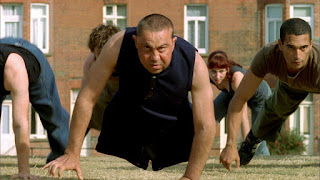Variety Performance (History of Variety)
Variety performance act:
History Of Variety Performances:
- Music halls can be traced back to London's 18th-century taverns and coffee houses, where performers sang songs while the audience would simply eat and listen to them play. Ultimately, taverns had rooms degraded to musical clubs where they held evenings for performers.
- The origins of the Royal Variety Show date back to 1912, when His Majesty King George V and Her Majesty Queen Mary decided to attend a 'Royal Order Performance' at the Palace Theatre in London's Cambridge Circus in support of the VABF's Charitable Fund for Variety Artists (the Royal Variety Charity's previous name) and its proposed plans to create an extension to its Care Home for elderly people.
First Video:
- I think since the venue was some kind of musical theatre and variety show, the intent of the act was to entertain as it included singing and dancing during the show.
- While performing their choreography, there was a woman with blonde hair wearing a blue dress with sparkles on it singing mostly while accompanied by a piano, violin, harp and possibly trumpets. The performance involved a large group of performers wearing a kind of soldier uniform.
- There was also a gentlemen speaking in the tempo of the music that later on in the speech he was reciting was the speech of Winston Churchill during which the woman is still singing in the background.
- With tonnes of different colour shades of brown with a white backdrop curtain of where the great British flag was, the elements are the stage that is very plain and the lighting is a general wash but switches to spotlight when the singer sang her solo.
- Most of the dance conceived of basic swaying motions and footwork
Janet Jackson's Concert:
- During the set, the lighting changed colour from bright blue, pink white and purple as Janet Jackson played her song with two dancers on either side of her back up.
- For her music, the sole aim of the act was entertainment and advertising.
- The act ended with a variety of dancing and singing as it was a pop song produced by the artist and the choreography movement was well rehearsed, sharp and eye-catching.
- The outfits mostly were cop/soldier uniform.
Swan Lake:
- The set is mainly staged with blue lighting and blue paint material with a backdrop of a beautifully starry night with a full moon while the flooring was water to tell the viewer what the actors are doing.
- The costumes are simple for the male actors, only some white feathers attached to some long white pants and the make-up was black around the eyes and white body paint for the arms to show the audience that they are swans.
- The slow pace of the music included violins, flute or piccolo and drums, and the dynamics and pace changed further in the performance.
- To empathise with the quite sophisticated and precise movement of a swan, the body movement is very graceful and exaggerated.
Group work:
- my group chose to do a ventriloquist/comedic act.
- originally it was three performers but we were able to get the opportunity to get another member which helped us to expand the storyline about what's going on.
- So we decided to that it would be an interview on national television , and the interviewers were going to ask question to the ventriloquist.
- During our practice we decided to improvise to see what each individual would naturally say or any ideas that would come through during the practice, which was a success because we were able to bring some comedic jokes into the performance and one of the interviewer is trying to flirt with the other interviewer and they was some jokes and some saying's that actually were excellent and were added to the performance once we performed it towards the audience which were our classmates.
WWW:
- good characteristics
- teamwork
- handled well of the process of having another performer join our group
- the tone of voice and pitch changes
EBI:
- More body movement and use of space
- more clear dialogue
- development of character



Comments
Post a Comment